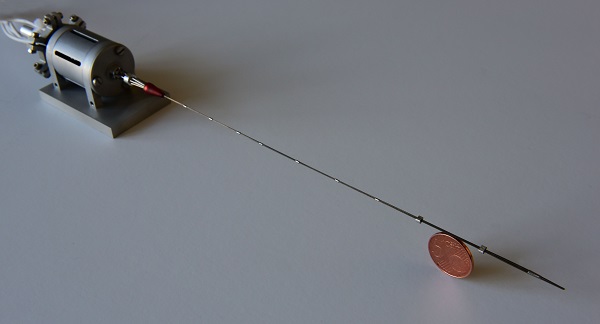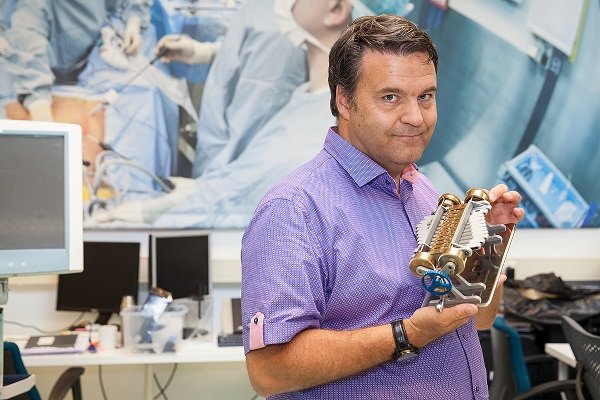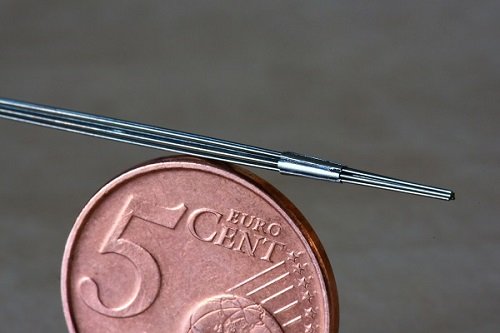Surgical tool inspired by parasitoid wasp
Surgeons will find it easier to operate with a flexible, ultra-thin and steerable needle. Indeed, many medical applications have a need for this new type of needle, for example during deep medical interventions in the spinal cord. Paul Breedveld, professor of Medical Instruments & Bio-Inspired Technology developed an ultra-thin, flexible and steerable needle with PhD student Marta Scali and fellow researcher Dimitra Dodou.

As a team they are part of TU Delft’s Bio-Inspired Technology Group (BITE) and work at the Department of BioMechanical Engineering. For the design of this needle they asked their colleagues at Wageningen University & Research for inspiration from nature. Sander Gussekloo, a researcher at Wageningen, studied the ovipositor used by the parasitoid wasp to lay eggs. Breedveld and his team used his findings to develop a series of prototype needles that can automatically advance through the medium by steering themselves without having to be pushed from the outside. They are the thinnest needles of their kind in the world.
Surgical tool inspired by parasitoid wasp
‘When I observe a parasitoid wasp, I look at it from a very technical point of view. The parasitoid wasp’s ovipositor is so small that the wasp is not capable of developing muscles in it,
Paul Breedveld

The parasitoid wasp
The parasitoid wasp lays her eggs in the larvae of other insects that are hidden in plants, trees or underground. The wasp lays her eggs with a thin, hollow tube attached to her abdomen, the ovipositor. She uses it to pierce and steer through obstacles, until it reaches the larvae, where she leaves behind her eggs. These larvae will later serve as food for the parasitoid wasp larvae. What’s special about the ovipositor is its extreme flexibility. Gussekloo is still studying how exactly the parasitoid wasp steers the ovipositor. ‘She can send the separate parts of the ovipositor in all directions. But the ovipositor does not have any muscles, so the question is: how?’

Thinnest needle in the world
The thinnest needle in the world that Breedveld and his team developed consists of seven individually moving and sliding rods. ‘So it has even more smart components than the wasp’s ovipositor.’ The unique thing about this mechanism is that keeps the seven super-elastic rods together, which pull themselves forward by means of surface-dependent friction with the medium. ‘We can already make gentle S-curves, and now we are going to conduct further research on how to make sharper curves.’ The working principle of the needle is easy to combine with other functionalities, for example tubes for delivering medicines in deep, difficult-to-reach places in the body.

Marta Scali has already published two articles on this research:
Read more about the research at WUR here
Read more about the BITE group
